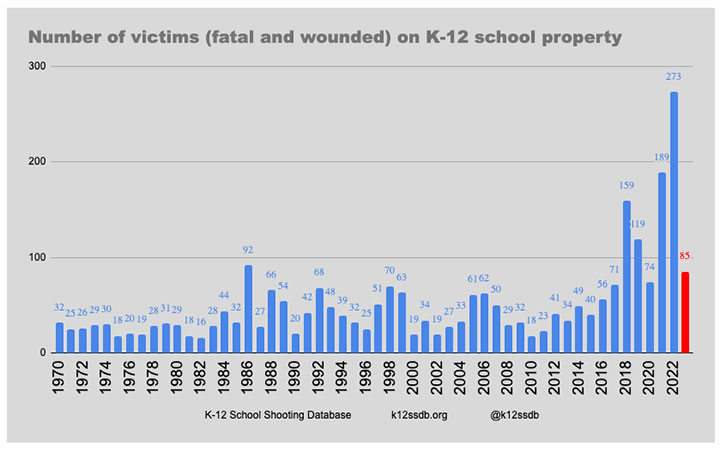The weekly Pagosa Springs SUN published a lengthy article yesterday, about the public meeting hosted by the Archuleta School District and held at the Pagosa Springs High School Auditorium.
I also had a chance to attend that public hearing.
The panel doing the presentation included the ASD School Board, the District Superintendent, the principals at the District’s three schools, the Archuleta County Sheriff and Undersheriff, and Pagosa Springs Police Chief and Assistant Chief.
The event was a chance for the District to explain — and apologize for — its handling of recent threats of violence at District schools. The District also wanted to give parents and the public to ask questions and air complaints… which several of the attendees were willing to do.
The audience turn-out was, however, modest. I counted about 50 people. The District has an enrollment of about 1,670 students, including about 100 students who are bused in from New Mexico.

One thing we learned during the question-and-answer portion was that the Sheriff’s Office and the Pagosa Springs Police Department — both under contract to provide ‘Resource Officers’ to the Pagosa Springs Elementary, Middle and High schools — have been short-staffed recently, and have struggled to make officers available for school supervision duties.
School Board President Bob Lynch kicked off the meeting.
“We have a chance to step back from some recent events, and reflect and learn and make sure that we’re doing everything possible and everything that’s demonstrated to be best practices to keep our schools safe and secure. We want to share specific safety and prevention protocols that are employed throughout the District…”
“I hope tonight we can model our intent to be transparent in our desire to continuously improve our practices,” said Superintendent Rick Holt, while also noting that Colorado laws and the federal Family Educational Rights and Privacy Act set limits on what information a district can share about students and minors.
“I just want to call out that that is an area where we are continuing to get advice and talk to legal counsel and we also work closely with law enforcement to determine what can we legally say and not say, so … I know that can be hard,” he said. The District had sent out information about a threat at around 7am on March 31 — resulting in complaints from parents, that the timing of the announcement did not inform parents early enough to keep their children home, if they wished.
“You’re absolutely right [about the timing of the information] and we’ve changed our procedures because of that and … when we know about something the night before, we’ll do what we do for snow days, which is basically talk to each other at 4:30 or 5:00 in the morning, and get that information coordinated. So, I just want to say, we’re learning how to be better…”
“…We have a chance to improve what we’re doing.”
Pagosa Springs Middle School Principal Chris Hinger handled the bulk of the exposition coming from the panel.

“Thank you, community, for coming out. Because this is certainly a community concern, and one that is definitely heavy on my heart. I’ve thought a lot about what I’d like to talk with you about, and… a lot of the things that are happening are at the Middle School, and that is absolutely my responsibility. Our responsibility…
“So I took a walk and was thinking about — 1999 — was five years into my career, teaching Middle School science, when Columbine happened…
“…And so what we’re talking about is bone-chilling. From that instant forward, in my life, in my career, none of us who got into this career thought that we’d be here today, talking about this. I was getting into this career to teach kids. I love kids, right? I wanted to teach them science. I love science.
“But that was something that just shook our world. Columbine shook our world. And out of Columbine came a lot of protocols and a lot of response that schools has to start working with police officers to respond to such incidences…
“And I can remember, following that, probably the first ‘lock-down’ protocol came out, where we just learned that, if you are behind a locked door, you are exponentially more safe than not. And so we started our first drills…”
Those drills and protocols are not exclusive to Colorado schools, but are being practiced all across the country. Unfortunately, the disturbed young people responsible for recent school violence come through our school systems and are familiar with the drills and protocols, and how to work around them.
Sen. Chris Murphy (D-CT) claimed on April 2 that there have been “more school shootings than days in the year” to date in 2023.
This may be an inaccurate reference to the Violence Project’s “K-12 School Shooting Database”, which tracks any incident in which “a gun is brandished, is fired, or a bullet hits school property for any reason, regardless of the number of victims, time, or day of the week.”
Citing the Violence Project’s database, NPR said as of March 29, “74 people have been killed or injured by guns at American schools this year,” which included 18 killed and 56 injured. EducationWeek’s tracker uses more limited criteria, and reported that 10 people have been killed and 13 injured in school shootings this year (as of April 7).
The U.S. saw a record number of school shootings in 2022, according to the K-12 School Shooting Database maintained by researcher David Riedman.
Here’s a chart from the Shooting Database website, as of yesterday.

According to this chart, the U.S. has already seen more victims of school violence, as of April 14, than in a typical entire year… since 1970.

